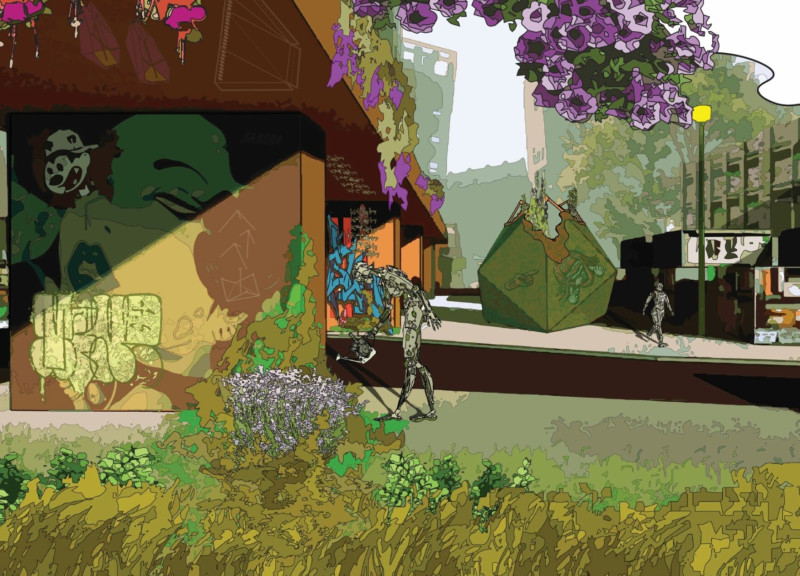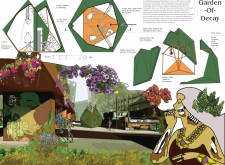5 key facts about this project
The design is a pavilion that explores the ideas of impermanence and reflection, located in a natural environment suitable for meditation. It serves two main purposes. One area acts as a locker for storing items that may distract users. The other area is a dedicated space for quiet contemplation and interaction with nature. The overall concept highlights the temporary aspect of existence, encouraging people to engage in mindfulness.
Materiality
The pavilion is built using cedar wood and bio-leather made from sea algae. These materials were carefully selected for their environmentally friendly qualities. The wood frame holds the structure together, relying on gravity and the outer skin for stability. The bio-leather is thin and secured with wooden buttons, allowing natural light to come through and brighten the interior space.
Spatial Organization
Inside, the design separates the locker area from the meditation space. This layout helps users transition from the outside world into a more focused atmosphere. The locker area provides a place to store personal items, while the meditation space features seating and planters that invite users to connect with their surroundings. This separation is key to creating an environment conducive to reflection.
Integration with Nature
The pavilion also features a 'Garden of Decay,' where plants grow from the inside to the outside. This connection to nature enhances the visual experience and strengthens the relationship between the building and its environment. The garden symbolizes growth and change, matching the pavilion's theme of temporality.
Interaction and Engagement
User interaction is an important aspect of the design. Water-based markers are available for writing on the bio-leather, allowing individuals to share their thoughts or reflections while inside the pavilion. This feature promotes a personal connection to the space and encourages both inward reflection and participation in a shared mindful experience.
The pavilion serves as a place of temporary refuge, reminding users of the balance between human-made structures and the natural world. The bio-leather skin will gradually break down, leaving behind the wood framework and flourishing plants, marking the passage of time.



















































